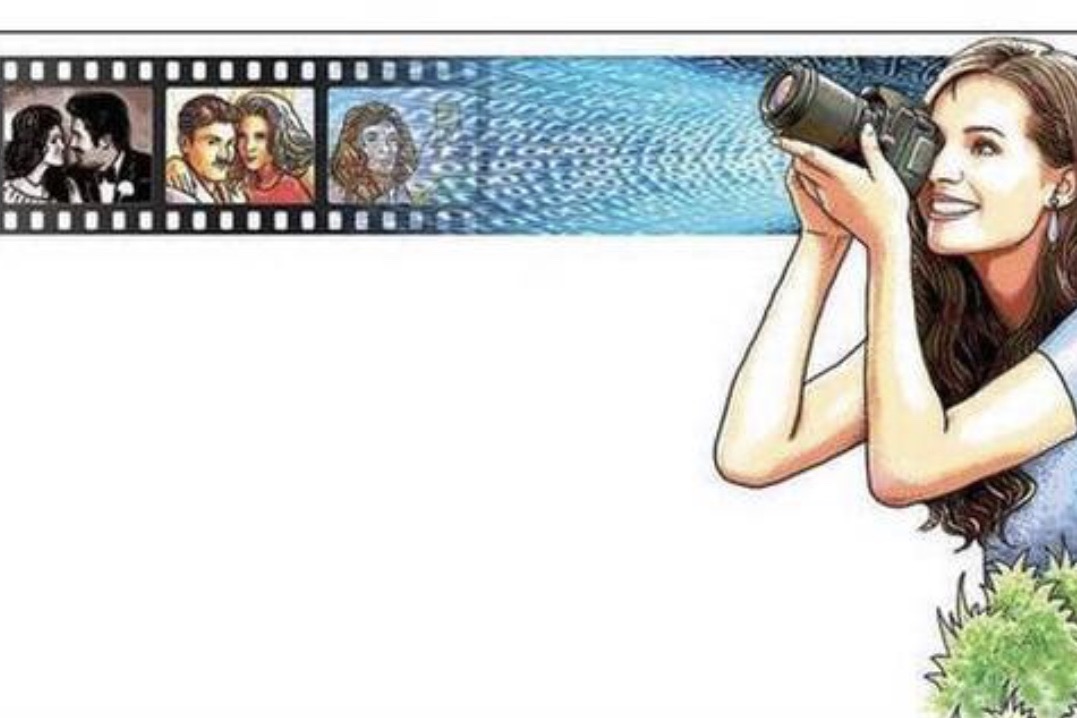
Once upon a time, not so long ago, there lived a king and queen who took too many pictures. If they wrote it, this is how my story would read. It was just three reels yet was becoming family folklore. We had committed the crime of taking more than a hundred pictures on our week long honeymoon. “That is more than fifteen snaps in a day,” the kinsmen solemnly observed. Thirty five years later, it is hard to believe that something that was considered such a colossal waste has become routine. In fact we take bursts of shots just to ensure that we get the perfect picture, sans closed eyes and queer smiles.
Considering the way things were done in the past, it is amazing that we still got a fair yield of good pictures. To think that we took a single shot ( taking an extra was an ill affordable luxury ) and then waited months for the reel to be completed because pictures were taken on special occasions. Perhaps it worked because photography was a very serious and skilful business back then. So not only the photographer, the subjects were careful too, paying attention, standing stiff, looking straight into the lens. And then the idiot proof digital camera arrived and changed everything. It allowed anyone to take photos by trial and error, at no extra cost.
Before continuing I digress to provide some background to the clueless. A photo, nowadays, is a piece of digital information that can be instantly sent to a friend, uploaded on a website or edited on a computer. Before they were digitalised, cameras were analog devices that captured pictures as patterns of light and dark on silver treated reels of plastic film. The reel was developed using chemicals, thus fixing the latent invisible image as a negative. The negative was printed to get the positive, the photograph as we know it. The reel that had thirty six prized rectangular frames came in a cartridge which was snapped into the camera. The top and bottom of the reel had a row of little holes so each section of the film could be wound out of the way after a photo was taken, simultaneously releasing an unexposed frame ready for the next shot.
Sometimes by a stroke of luck the reel had an extra frame or two. So when you turned the lever after the thirty sixth exposure and it moved on, it was reason to rejoice. But this joy came with a caveat, if you could continue to wind the reel it meant that it had not been mounted correctly. This happened to us at the Ajanta Ellora caves. We wanted to take one last picture of the magnificent entrance when my husband noticed that the reel had finished. He gingerly pulled the lever and we were thrilled that there was an extra. After clicking the picture he happily declared that their seemed to be another and I quickly posed for it. It was only after three ‘ free’ clicks that we grew suspicious and checked to find that the reel wasn’t mounted. The end result, we don’t have a single picture of our visit. Nowadays with most of our pictures stored in virtual albums, clouds and webs I sometimes worry about their fate. If the system develops a glitch will all our memories be lost, gone in a flash, reduced to cyber dust ?
Talking of memories, I often reminisce of a childhood incident when I see the thoughtlessness with which we take pictures today. My class teacher had offered to take a family photograph at my birthday party. Moments later she apologised that she had inadvertently clicked when no one was looking. My father tried to comfort her saying that freezing a candid moment was good too. She sheepishly admitted that she hadn’t been looking either. And then both of them gravely agreed that it was a ‘dead loss’. Six months later when we got the reel developed, the envelope contained an off centre shot of the decorative light over our dining table. A dead loss indeed, made worse by the additional expenditure of consigning it to paper. Dad duly scolded the studio owner for this lapse and then decided to keep the photo in our album. Just to remind us kids what happens when you don’t pay attention. It is still housed there, a reminder of those simpler times when every picture counted!
(published in the Hindu on 2/9/2018)
Brings back old memories. I have used roll-based cameras since school days and have been one of the first buyers in the country of the 2.1 and 5 megapixel cameras right when they became available. Can’t agree more with Di on everything in the article. On a side note, I’ve also faced hurdles trying to buy and use the latest tech gadgets. I searched the entire Nehru Place, Palika Bazar for the first ever USB music player I owned. Most shopowners very knowingly told me that there was no such thumb/pen/flash drive that could play music!! It was hard to convince them that I knew better than them and that they didn’t have it. Finally, I ordered one by post (online shopping was just starting, and ATMs had just started appearing). It was a nice, white, small player with 512MB capacity. The only problem while using it was, people around me would take it to be a hearing aid, would pity me and talk louder to me
Respected madam,
Just read ur article in The Hindu ” Picture This” very nice comparison gud old days and present in digital era….enjoying to read ur article …
Best wishes for ur writing,
with warm Regards
—
Shrishail K Sarade
MLIS, NET
Information And Knowledge Centre,
D E Society’s
Chintamanrao Institute of Management, Development & Research,
Vishrambag-416415
Sangli
Cell No-9421184933
Thanks for appreciating my effort shri sarade…….and thanks for writing in
Regards
Manju